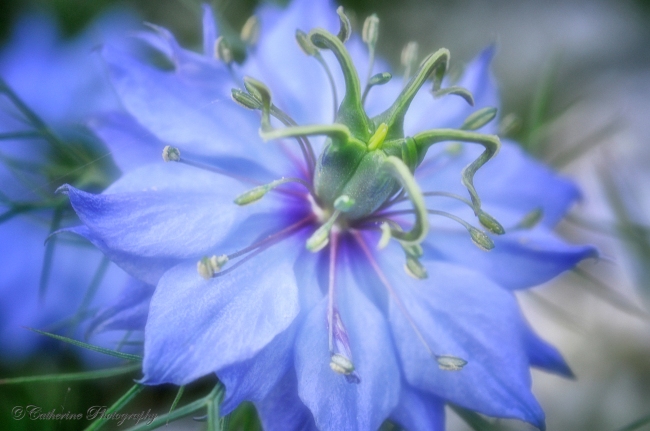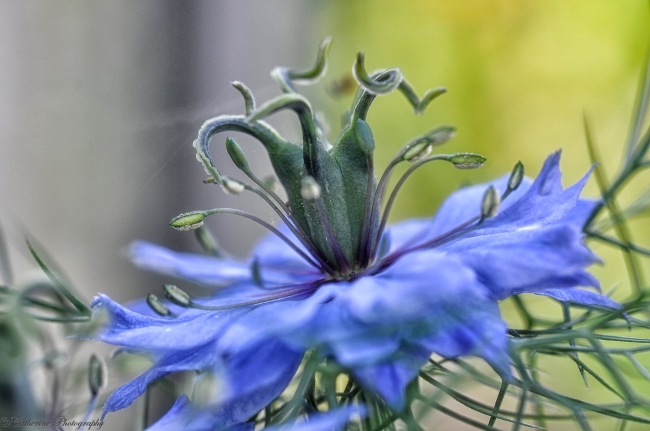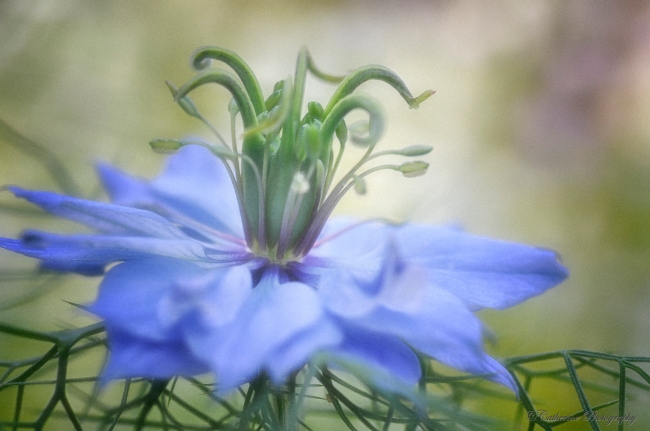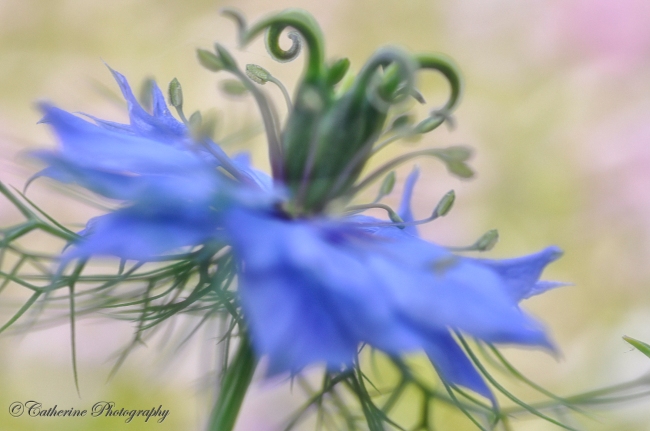My neighbor invited me into her garden, she has different types of poppies growing in her garden without planting them. After taking some photos of the poppies, there were the deep blue flowers caught my eyes. It was the Nigella Damascena or well know as Love-in-a-Mist. I love the fern like leaves which look like a nest below the flowers. If you see this beautiful flowers you will see the unique and unusual shaped petals and leaves.
I enjoyed two hours happily snapping my camera at her litte paradise garden.
Source from Gardening more informations on this beautiful flowers:
Nigella earns its common name of Love-in-a-Mist with a tangle of ferny, fennel like foliage that form a mist around the flowers. I’m not sure why anyone would call Nigella Devil in the Bush. Nigella flowers start off as interesting puffs, open into rich toned, straw-flower like blossoms and change into equally attractive seed pods.
Once you see Nigella in bloom, you will always recognize it by its unique mist of airy bracts and foliage. The foliage is ferny, the flowers are fluffy and the seed pods are intriguing. Best known for the vivid blue blossom variety, Nigella also blooms in purples, pinks and white.
Design Suggestions:
Growing Tips:
Nigella does not like being transplanted and does best if direct seeded outdoors. Seed can be sown from early spring, throughout the summer and even in fall, in climates with mild winters.
Choose a site that gets either full sun or at least morning sun. Nigella is not particular about soil quality, but it doesn’t like to remain wet.
To sow, simply scatter the seed and rake it in. You don’t really need to cover the seed with soil, but it does need to be pressed down slightly.
Maintenance: Nigella is a short lived plant and probably won’t make through an entire growing season. For a continuous bloom, repeat sow every 4 weeks. Once your plants have begun to scatter seed, you won’t need to continue sowing.
Cutting and deadheading will keep your plants flowering a bit longer, but you’ll sacrifice the seed pods.







Just exquisite pictures! Do you sell prints?
Yes, i do and if you want any of the photos, please let me know. Thanks
Catherine